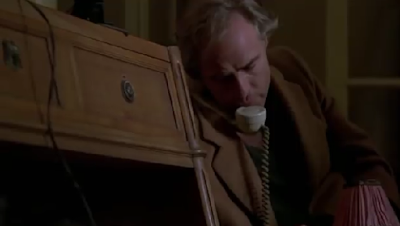 |
| Maria Schneider and Marlon Brando in 'Last Tango in Paris'.
|
About 45 years ago, the film critic Pauline Kael made the
bold statement that a landmark in the history of cinema emerged. The unusual
suspects included a young Italian filmmaker, a middle-age American actor who
has just delivered one of the most iconic characters in the history of cinema
(and made others a few offers they couldn’t refuse), and a French actress who
just reached 20. This international wonder was recognized by many awards, and
yet generated enough controversies for which active discussions regarding it
have continued to this day. The film is of course Bernardo Bertolucci’s ‘Last
Tango in Paris
 |
| The contemplation of life. |
Before we indulge ourselves in this modern classic, I would
like to offer a bit of a warning. This film is extremely sexually explicit, and
while my discussion will be more about psychology – because I feel it was
Bertolucci’s focus after all – there are certain points that we may encounter sexual
content, and I hope that will not be offensive to certain readers. The first
part will be about background and style, the second part will be about content.
 |
| Bernardo Bertolucci |
‘The Last Tango in Paris
 |
| Bertolucci directing Brando and Schneider. |
Marlon Brando was one of the actors I admire the most in the
history of cinema, and therefore it shouldn’t be surprising that his
performance here is among one of my favourite, alongside with ‘Godfather’. One
cannot stop falling in love with Brando’s talent, if you really love cinema,
because his style was just so unique. Brando could be considered as one of the
key actors who involved in method acting. The way he mumbled through his lines,
and his monologues, especially in his films from the 1970s, offered a hypnotic
effect. I can say I have fallen in love with Brando’s monologues – I just want
to hear him talking on and on and on.
 |
| Bertolucci and Storaro's painterly composition. |
While ‘Last Tango in Paris
When one watches a film by Bertolucci, the significant
contributions from Vittorio Storaro, who is Bertolucci’s long-term collaborator
on cinematography. Though I will talk in detail about Storaro’s general style
in the article for ‘The Conformist’, I will pick up a few points which are
relevant to ‘Last Tango’ here. Drawing inspirations from Bacon, many scenes in
the film had a painterly feel, and to be sure, if one pauses the film every now
and then, the shot may appear as if they are paintings from an artist. The
beautiful compositions, the brown hues, with the balanced and often stylized
use of light and shadow, Bertolucci and Storaro created images as if they were
painting on celluloid. It was quite clear that there was a contrasting
atmosphere when one compared the scenes outside the apartment (i.e. Jeanne’s
normal life), and those inside the apartment (i.e. Jeanne and Paul). While the outdoor
scenes were naturalistic, the indoor scenes were painterly and stylized in
terms of lighting and composition. In many of those scenes you can almost
always see light mingling around with shadow! I am not sure if an analogy to
Freud’s ideas are totally relevant here, yet I feel that the intimate scenes
inside the apartment are very similar to the unconscious side of our minds, and
the place is where the more carnal desires lurk around. While the indoor scenes
can be seen as limited, often only involving Paul and Jeanne, they are among
the most atmospheric and emotional moments of this film, and Bertolucci’s
mastery for the story should be recognized. I remember reading a negative
review of Bertolucci’s flawed classic ‘1900’ from Roger Ebert, and in there
Ebert pointed out that Bertolucci’s greatest moment was when he was directing 2
characters in a room. I think at least Ebert could appreciate the strength of
Bertolucci’s work (also think about the ‘Plato’ scene in ‘The Conformist’). To
sustain the fascination and attention from the audience in such a minimalist
mise-en-scene requires a lot of talent and creativity from the filmmaker.
Bertolucci should be proud of that!
(1/2)
Film Analysis



